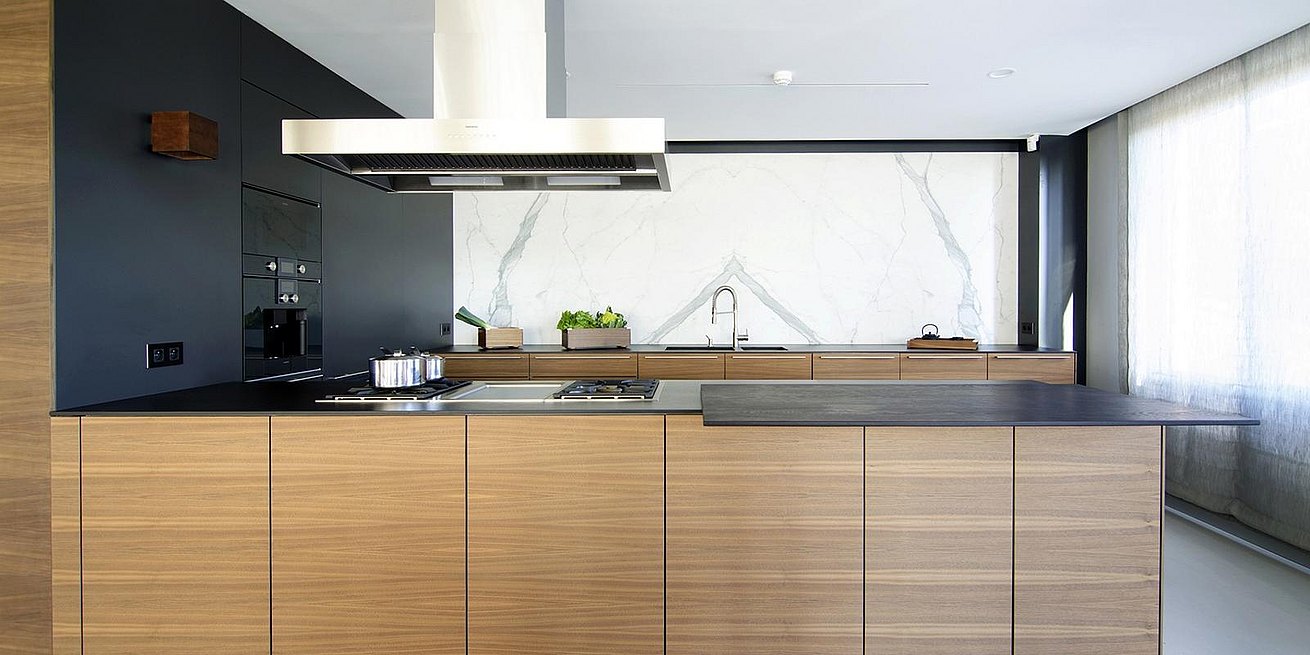
At the bulthaup presentation in the recent 2018 Milan Furniture Fair, a trend we had been observing for some time became apparent: although we continue to have many customers who choose the same finish for all their kitchen cabinets, there is an increasing number of those who prefer to combine elements made of different materials to create an appealing mosaic of top-quality surfaces. And in that premium mix, wood plays a leading role. Contrasting with steel, laminate, glass and aluminum, wood has the ability to reinforce our connection to nature and appeals to our deepest sense of a warm home.
From living trees to living spaces
The most creative material in the world is growing, almost without our help, and it’s doing so in complete silence. It’s a material that leaves the living quality of all others far behind: wood. Wood is a piece of nature. It breathes. It lives. It radiates comforting warmth, has a positive impact on the room’s atmosphere, and offers unlimited potential for design. With its grain, color, and texture, the wood we live with stimulates our senses. And in these fast-changing times, it soothes our longing for calm. High-quality wooden furniture moves with us, and is often passed down in the form of heirlooms from one generation to the next. Maybe it’s because it can tell stories? Haven’t we all stood in front of a desk at some point, touching its inlay work lovingly and thinking how much this old piece of furniture must have seen, heard, and experienced during its lifetime?
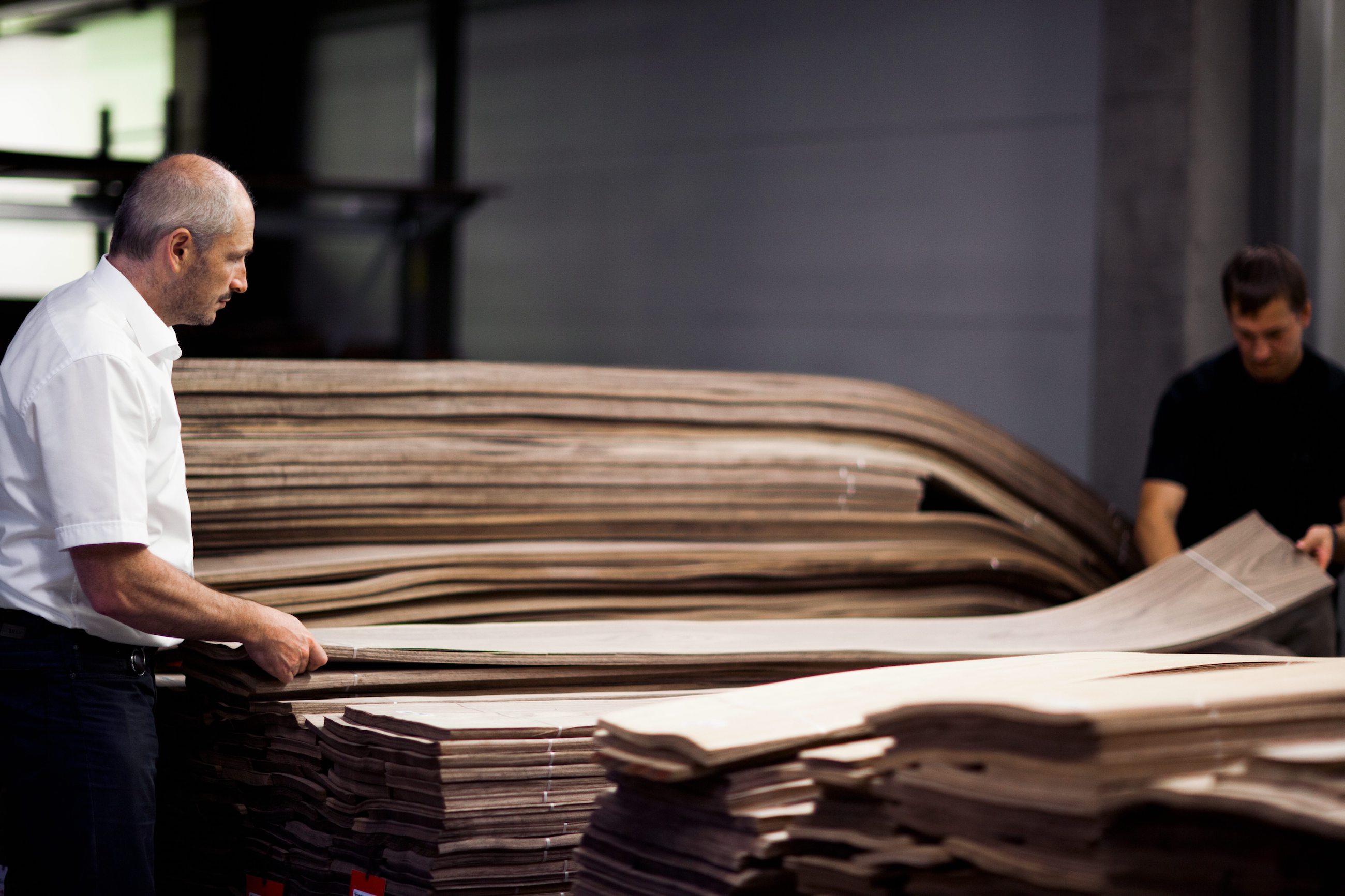
A material with a character of its own
Wood is like us –individual. No two pieces of wood are alike, not even wood of the same type. As a result, furniture bears the unmistakable mark of the tree from which it was made. And that’s what stimulates and inspires bulthaup to do justice to this vitality with its furniture. It’s a process that involves searching for that special character and expressing it fully in the kitchen. Underlying it all is our love and respect for wood.
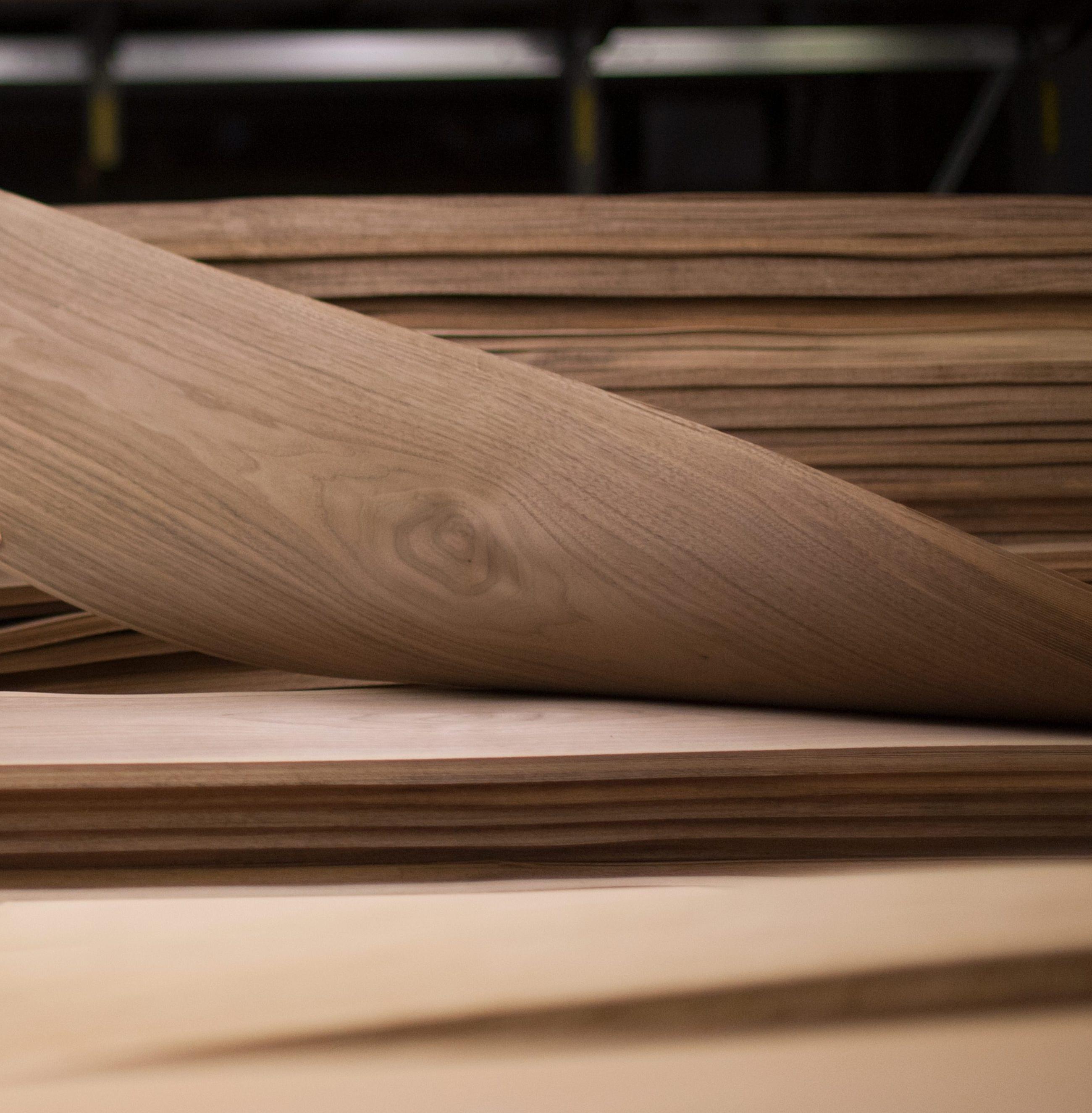
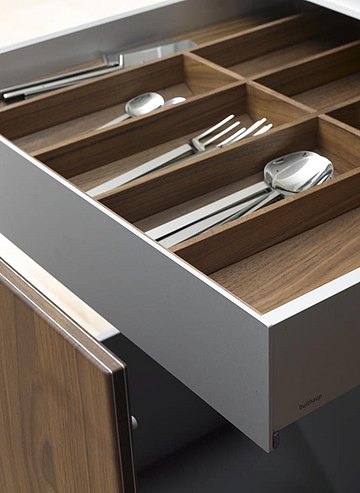
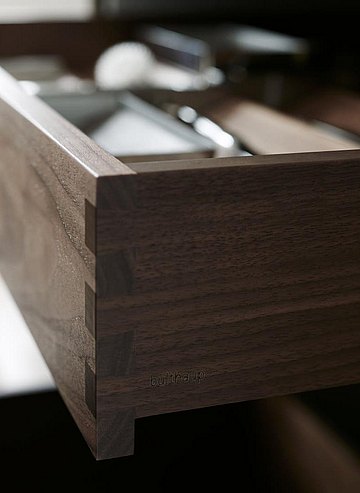
The importance of being sustainable
At bulthaup, we only use wood from sustainable tree plantations, never resorting to tropical varieties. You don't have to travel to the end of the earth to find wood. It can actually be very close by – in the elms, oaks, or apples around us.
An endless range of woods
The sensuality of elm
Elm wood used to grace classical sideboards until it finally became scorned as old-fashioned and drifted into oblivion. Added to this was the fact that Dutch elm disease was also felling most elm trees. Today, the elm has once again reclaimed its position in contemporary design – for example, offering a sensuous gray or russet hue next to a stainless steel surface.
The contrasting hues of apple wood
The wood of the apple tree also sets stunning accents. In the orchard, it’s an everyday occurrence. But in the home, it’s still rather exotic. That’s because its veneer is extremely difficult to process. This brittle, uneven wood requires expert skill. But it’s worth it, since with careful craftsmanship, the apple tree can enrich any living space. Each front is a unique piece, an exciting contrast between fiery-dark and fine-grained light components. The variations in color and grain within the same log constitute the basis of the unique, natural look of the resulting surface. Given that apple trees never grow very large, bulthaup uses their precious wood in bands that create a planked effect with warm, contrasting colors.
Swiss pear, the passion of cabinetmakers
bulthaup also uses the wood from another fruit-bearing tree: the Swiss pear. Because of the climate conditions and the fact that they grow wild, these trees from Eastern Switzerland feature a lively, straight grain. Cabinetmakers have always been enthralled by this wood, which is completely different from conventional pear wood. In the 1950s, Swiss pear was so scarce that it was almost impossible to find on the market. A replacement was searched for –and found– in the related service tree. Its warm-colored grain is indistinguishable from that of the original pear tree from Switzerland. And that’s why service trees have become known in the trade as Swiss pear trees.
The delicacy of bamboo
A natural Asian material that features a high-quality, wood-like appearance is bamboo. With its velvety-matte surface, it creates a thin, striped veneer with knots known as nodes.
The delightful feel of walnut
American walnut is a beautiful hardwood with a regular, fine grain and a delicate natural greyish-brown hue. At bulthaup, a special natural wood varnish –containing a type of sunblock–protects the veneer against the effects of light and preserves the walnut’s delightful feel.
Strong as an oak
Jointly with American walnut, the most widely used wood in bulthaup is oak. Hard and dense, its resistance to moisture led it to be highly valued in shipbuilding over the course of the centuries; its advantages for kitchen use are obvious. At bulthaup, oak appears in different forms: solid and veneered, in natural grey or black-brown in its smooth version, with either vertical or horizontal grain; or with a rough-sawn, highly textured surface, available in natural gray, black-brown, white, black-gray or bronze-brown.
The luxury of solid wood
The solid wood used in bulthaup bar tops gathers the best quality cherry, oak, and walnut. For the brand's solid wood fronts, on the other hand, which have to cover far larger surfaces, bulthaup makes rational use of this precious natural resource. Made up of five layers – three solid wood layers sandwiched together with two fine aluminum layers – the 13mm solid wood fronts are both resistant and delicate.
Wood at Milan 2018
Among the many new items we witnessed this year at the events held by bulthaup at the deconsecrated church of San Carpoforo in Brera, wood had an overarching presence. And there is one variety that we are particularly pleased to have welcomed: chestnut. With their subtle grain and light hues, the chestnut fronts of the tall unit line in the newly-evolved b3, located behind the bar, drew everyone's attention with approval and expectation, eliciting dreams of the potential that is bound to materialize in months to come.
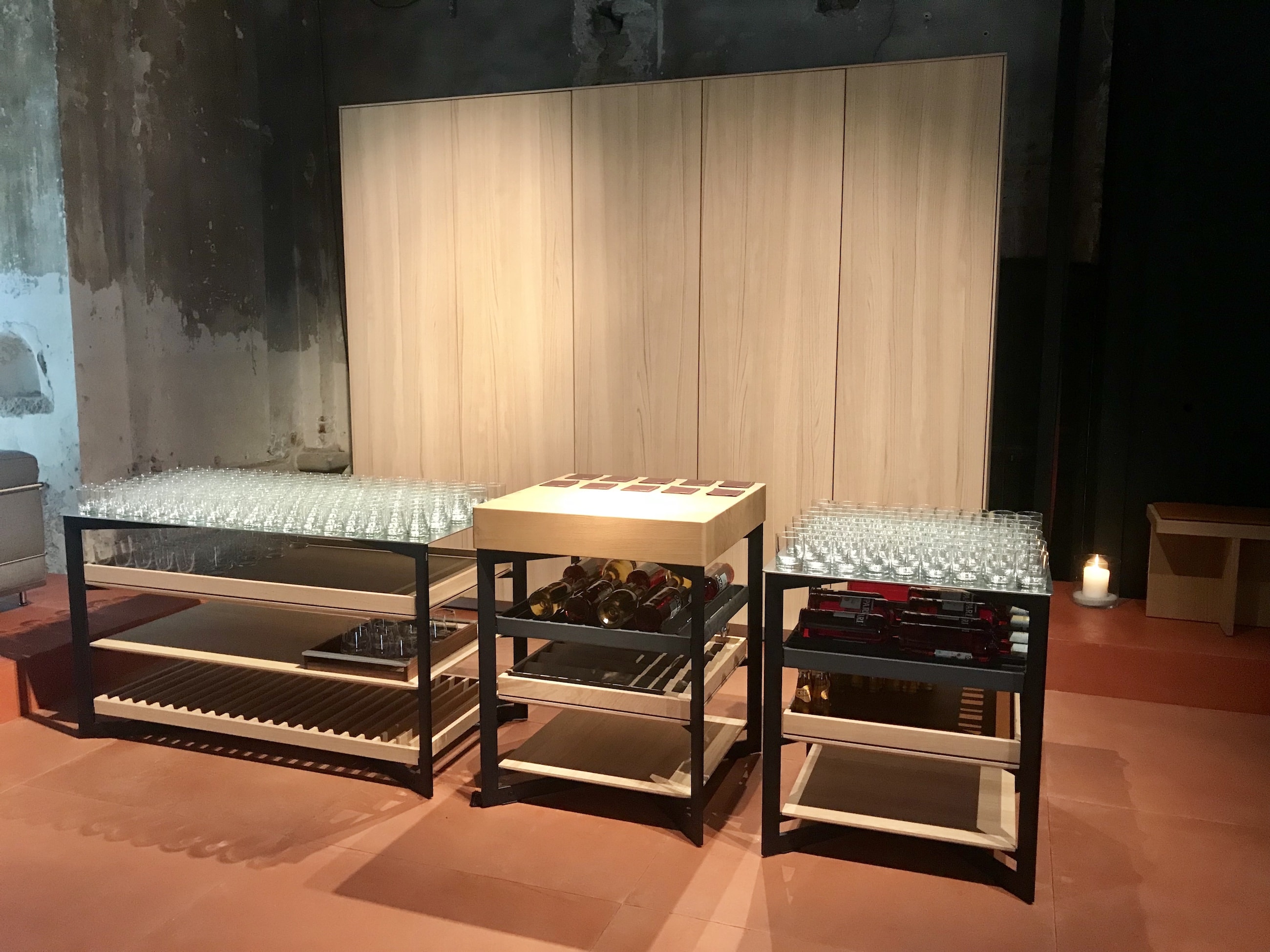
First photo:
Project by bulthaup Barcelona Bach 7. Photograph from Maria Comas.
Sixth photo:
Project by bulthaup Pamplona Sagaseta. Photograph from Pablo García Esparza.
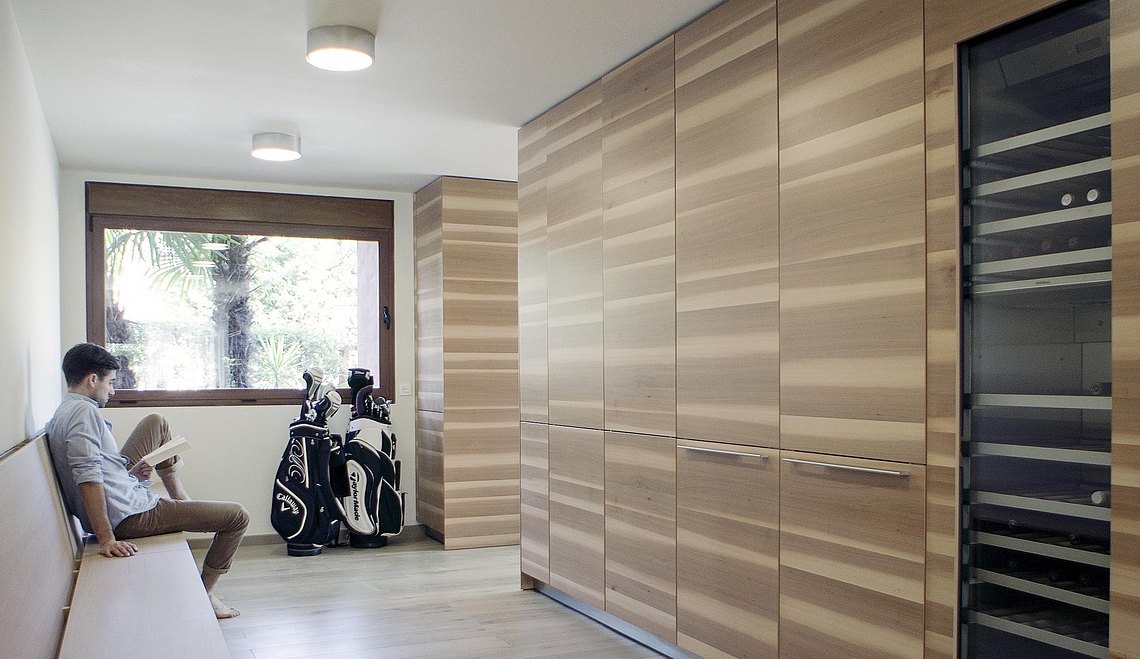

![[Translate to International English:] La vida interior de una cocina dice mucho sobre la personalidad](/fileadmin/_processed_/f/c/csm_cocinas-madera-bulthaup-10_4c1281c233.jpg)
![[Translate to International English:] Orden y comodidad en los interiores de la cocina para un máximo aprovechamiento del tiempo](/fileadmin/_processed_/b/e/csm_cocinas-madera-bulthaup-11_1b7e37f4b1.jpg)
![[Translate to International English:] La cocina bulthaup facilita la organización para que tenga siempre lo necesario al alcance de la mano](/fileadmin/_processed_/c/c/csm_cocinas-madera-bulthaup-12_e043ce8a8c.jpg)
![[Translate to International English:] Los elementos funcionales le ayudarán a localizar sus utensilios de cocina en todo momento](/fileadmin/_processed_/6/1/csm_cocinas-madera-bulthaup-13_22d3e66678.jpg)